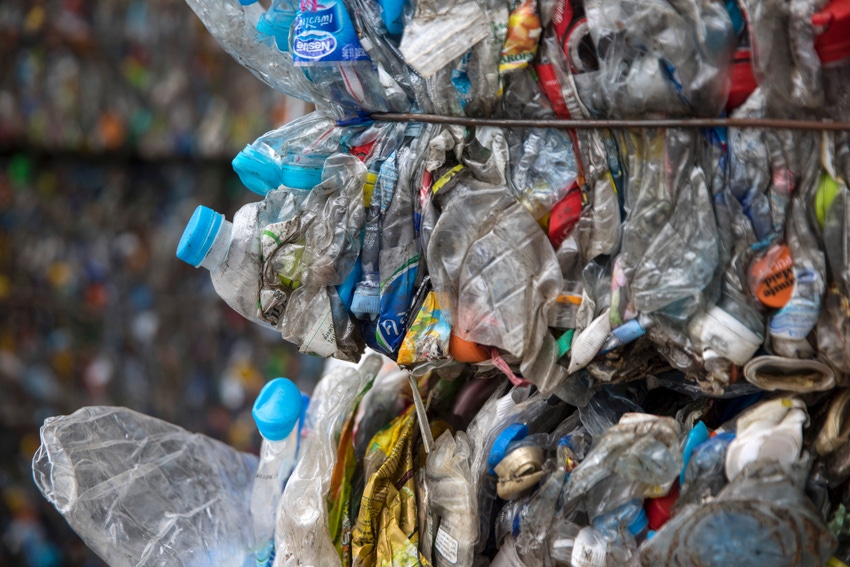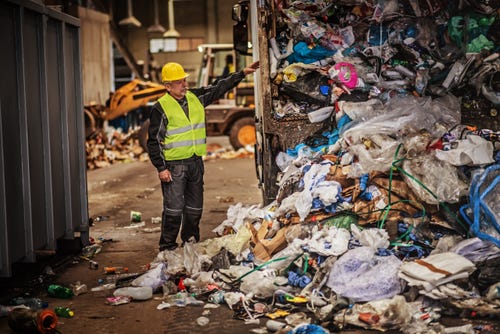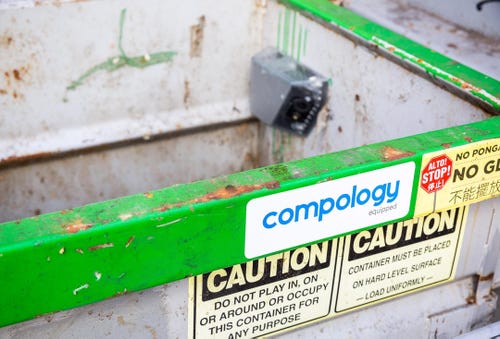Ask the Expert: 8 Questions on MRF Contamination with Nathiel Egosi
Industry expert, Nathiel Egosi, discusses the impacts of contamination at MRFs and how upstream solutions can help
June 10, 2019

We sat down with Nathiel Egosi, P.E., President and CEO of RRT Design & Construction, a national leader in the engineering and construction of solid waste processing and recycling facilities to discuss the impacts of contamination reaching MRFs and the value that upstream dumpster monitoring brings to increased profitability and reductions in operating costs.
1. What are the primary challenges MRFs face when dealing with incoming contaminated material?
Egosi: So there are two different types of contamination we’re talking about. First, small contamination that’s hard to detect, but still needs to be removed to maintain material quality. Second, and the most problematic, is large contamination, such as pallets, closed cylinders or tanglers, like garden hoses and chains. Some MRFs use manual labor to try to identify and remove the larger items early, but rarely is all of the contamination identified and most makes it to the sorting conveyor line. These larger items end up jamming the line and causing the sorting belt from operating. Now you’ve got 30-40 people at the MRF that can’t work until the jam is cleared and the equipment is functioning again.
2. What are the consequences of interrupted operations due to contamination?
Egosi: This is not only a huge cost issue in terms of wasted time and delayed production, but also creates some major safety hazards when trying to get the sorting machinery up and running again. Also, if a MRF delays operations but trucks continue delivering, then material starts piling up on the floor causing even more unnecessary cross-contamination in the tipping area as loaders start to stockpile and over handle the material.

3. So what are the cost implications of contamination reaching the MRF?
Egosi: Contamination reaching the MRF is extremely costly. First, it can cause a huge swing in total revenues through increased costs. Let’s assume, on average, you have 20% contamination at the MRF. So for each 100 tons processed, you’re dealing with 20 tons of trash. So for that 20 tons you’re going to have to pay a disposal fee, let’s say that roughly $50/ton, today. If that 20 tons wasn’t contaminated and instead was profitable recyclables, at roughly $50/ton today, you’re looking at a $100/ton upswing.
Second, let’s stick with that 20% contamination - that’s going to result in not only taking up capacity on the floor and on the belt, but it’s also going to be costly in terms of trash baling costs, load-out costs to trailers or contractors, and the tipping and disposal fees to landfills. The contamination also makes its way into recycled bales and MRFs have to manually trim those bales.
Third, it clearly leads to increases in employee headcount, retention problems and injuries.
4. What actions have you or your clients (MRF operators) taken to date in order to address the contamination issue?
Egosi: The battleline, right now, is at the door of the MRF and stopping or catching contamination immediately. What’s happening today is that plant operators are conducting audits on the MRF presort floor, or more sophisticated operators are even pulling trucks away from the entrance and sampling loads to identify contamination. As a result, they are rejecting contaminated loads before they hit the MRF Floor.
Operators are also trying to identify the routes and communities that are actually producing the contamination. With detailed auditing, you could potentially identify which city or hauler is the source of the contamination. This information can then be shared upstream to inform disposal habits and eliminate contamination in the stream. The problem is that it’s still very difficult to identify the origin source of contamination with multiple loads once it’s in the back of a truck and even more difficult to prove its accuracy. It does help though, and MRF operators are seeing the benefits, but this is again at an added cost!
5. There are many states such as California, New York, Massachusetts and Florida working to implement policies that help eliminate contamination at the source through regulation, auditing and generator accountability. What are your thoughts on the best approaches to accomplish this and the impact it can have at the MRF?
Egosi: Laws and policy would be helpful, but enforcement is generally lacking and it’s difficult to enforce anyway with inconsistent manual auditing.
6. What are your thoughts on how dumpster monitoring technology plays a role in auditing and helping reduce recycling contamination?
Egosi: With dumpster monitoring, haulers and processors could a) pick up or accept dirty material and charge accurately for it, b) avoid a contaminated pickup altogether or reject it at the MRF door or c) get clean material in the first place by using timely feedback and documentation to better educate generators and stop contamination from happening in the first place.
Cameras in dumpsters and contamination recognition technology can also help identify the “evolving ton” - Commercial accounts have set schedule pickups, but their waste streams often change for a variety of reasons, such as seasonality or even a service location’s tenant change. The ability to have trusted documentation, through images and data, to better understand what’s going on in the dumpster lets haulers make better routing decisions that avoid bringing contamination to the MRF and also identify generators that are dumping contamination into recycling bins to provide better education and correct generator disposal habits.

Compology’s in-dumpster cameras and AI technology remotely identify Contamination to help stop stream contamination
7. What could change if cities, haulers and MRF operators could identify what levels of contamination they’re dealing with?
Egosi: If we knew how much contamination a city was producing, and I’m the hauler for that city I would know exactly what I’m going to have to deal with. Without this knowledge, there are regular inconsistencies in cost models where haulers take on jobs that they’ve underbid because they’re guessing at the level of service needed. With more data and information, haulers and cities could track the level of contamination in advance, resulting in more accurate bids and, in turn, better service for constituents and customers, respectively. The industry gets smarter and stronger.
When we think about the advantages for MRF operators, let’s consider a similar example. When you’re mining for oil or minerals, you gather data to discover how much of and what quality is in the ground so you can know what your conversion is. MRFs are really conversion facilities that are converting recyclables that are “mined” out of communities into marketable products. So having this contamination information helps MRF operators have a firm grasp on the cost of processing more clearly.
8. So drilling down, how can improved contamination auditing capability help MRF operators when it comes to profits and costs?
Egosi: There’s a variable in the commodity prices of recyclables and there isn’t much you can do to control the rise and fall of those prices in the global market. On the other side, there’s the processing and sorting costs - labor, manpower, equipment, facilities, electricity, etc. - so I’d love to be able to control what comes in the door so I can better control my costs. “Control” can mean either maintaining quality consistency or knowing what I’m getting and price that service accordingly. If I know what the quality of incoming material is, then I can adjust my price to provide processing without a financial loss.
Mr. Egosi has led the construction of over 100 material recovery facilities nationwide, and has pioneered the development of advanced technologies for the recycling, paper and solid waste industries. He is widely recognized as an expert in process engineering and equipment design for the recovery of materials from municipal, and C&D wastes and advanced material beneficiation and refining of wastes for re-use. Mr. Egosi has also directed and coordinated solid waste project development activities; quantification/composition studies; materials and energy market surveys, recycling program design, technology assessments, plant sizing, permitting and environmental studies and project siting throughout United States and Canada. He travels regularly to investigate and study technology updates and waste management practices in Europe and North and South America. Mr. Egosi is a frequent speaker and has authored numerous technical papers on the subject of solid waste processing and material recovery technologies.
Compology brings efficiency to waste, recycling and organics services through accurate, timely dumpster data collection and simplified, actionable reporting. Compology’s web-based monitoring software, powered by rugged dumpster cameras help haulers, generators and municipalities thrive through more efficient operations and progress towards diversion and zero waste goals.
You May Also Like


